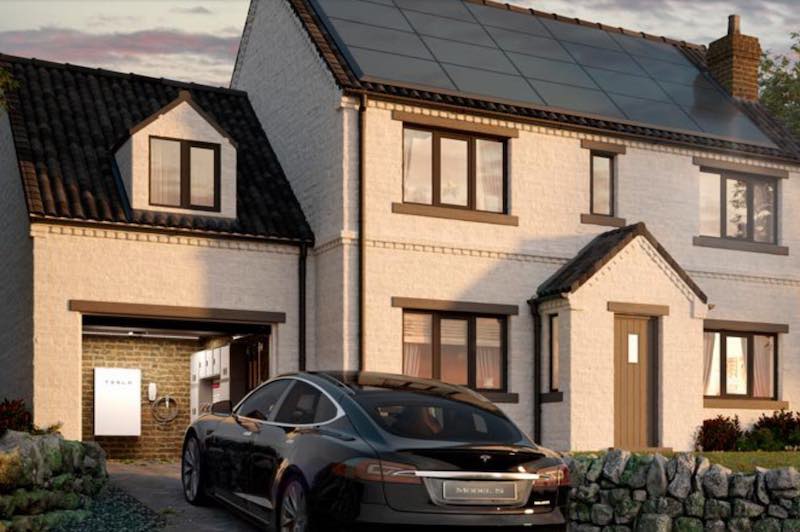

Imagine charging your EV from your employer’s large commercial solar system during the day, driving home with a battery full of free, excess solar and, thanks to the car’s bi-directional charging capability, plugging it into the charger in your garage and having that power flow into the house to run the oven and the lights during peak demand time.
That free power can also be traded into the grid for money or credits, and a portion of it is remotely controlled for grid stabilisation services, which you’re also paid for.
It’s an appealing scenario and critical components of it are coming together right now. At the end of June this year, JET Charge will certify under AS4777.2 the first EV bi-directional charging system in the country, with a standardised CCS-2 plug.
Founder Tim Washington says the Wallbox Quasar will be on the market by the end of the year and will cost ‘less than a standard Tesla Powerwall 2’ – which is a considerable outlay and likely to be a barrier for some.
In Australia, there are currently two cars available with bi-directional or vehicle to grid (V2G) charging capability – the Nissan Leaf ZE1 and the Mitsubishi Outlander plug-in hybrid.
Later this year, Hyundai will release the Ioniq 5 which, unlike the Leaf and the Outlander, has vehicle to load (V2L) charging capability. An adaptor will allow any household appliance to be plugged in at the charging port, and another standard 240 volt plug will be installed under the back seat.
While the Ioniq 5 can’t feed into the grid, it’s 3.5kW of power output from the 53 or 72kWh battery is perfect for a mobile office, running power tools, appliances, fridges, ovens, caravans, lights etc or powering much of the house if the power is out.
Washington, who is also Chair of the EV Council, says, “After 2025 every new EV should be capable of bi-directional charging to the home and to the grid. Volkswagen says all of their vehicles will be capable of bi-directional charging in 2022.”
Behyad Jafari, CEO of the EV Council says, “There’s a clear and obvious benefit to bi directional charging but, here in Australia, the work is in finding out how it translates into consumer value. Can we reduce the operating costs of the cars to zero?”
ARENA currently has four projects looking into vehicle to home (V2H) and vehicle to grid (V2G) charging technology to find out how EV charging can be managed at higher levels of uptake, with the lowest cost and greatest benefit to consumers, and the grid.
One of these is the Realising Electric Vehicle-to-Grid Services (REVS) project which involves 51 Nissan LEAF EVs from the ACT Government fleet deployed across the ACT to test and provide V2G services using bi directional chargers.
The trial will test new revenue streams to the fleet for providing the stabilisation services that avoid blackouts and improve energy security, otherwise known as Frequency Control Ancillary Services (FCAS). These could reduce the total cost of ownership of EVs.
Research fellow Kat Lucas Healey from ANU says, “If there’s a disruption to the grid, like a coal generator drops out, EVs can inject a short sharp amount of energy back into the grid to stabilise it.
“We’re looking at how the cars will be used when there is value in the market. These cars have a day job, and then they moonlight as a battery, plugged in when they are not in use.”
ARENA’s CEO Darren Miller says, “As EV uptake grows, this project will help to unlock a future where EVs are just as critical a piece of the electricity sector as the transport sector.”
Another ARENA trial involves AGL recruiting 300 EV owners across New South Wales, Queensland, Victoria and South Australia.
It will explore remotely controlling charging to off-peak times when cheap renewable energy is available, or to respond to constraints on the grid. And it will examine the ability and commerciality of EVs to become a source of energy storage and provide energy back to the grid when required.
Travis Hughes from AGL predicted in a blog post last year that by 2030 there’d be around 4GWh of energy stored in batteries connected to home and business and another whopping 36GWh of energy stored in EV batteries. He wrote, “That’s a lot of power. From a VPP perspective, it means harnessing a portion of the power from an EV battery to help supply and stabilise the grid, with attendant benefits for the grid, the community and our customers.”
Washington says, “If you have solar on the roof and you’re in the market for a new vehicle, an EV will get you a free stationary storage battery with 5-6 times the capacity of your home storage capacity. We think it’s going to completely change the way people think about their car and home storage.”
“In Australia, every house has 1.8 vehicles. Often one vehicle is not used and sits in the garage for much of the week. This is an inefficient asset, depreciating in value. But if it can store and supply solar, then it’s now working for you 100% of the time.”
This post was published on May 26, 2021 2:35 pm
Iconic Australian hardware and garden store says it has reached 100 per cent renewables, with…
Data used to showcase the downward impact of renewable energy on power prices contained a…
Most so-called ‘community batteries’ are actually installed by electricity networks, but this local group managed…
Rising energy bills are driving a surge in complaints. The NSW Energy Ombudsman wants better…
Australians are often being misled when they try to make sustainable electrical appliance choices, and…
China EV giant bows to trend of offering "complete solutions" for home energy, with launch…